Views: 370
 The entrance to the courtyard in which the Judenrat (Jewish Council) was located during WWII in the Large Jewish Ghetto in Vilnius
The entrance to the courtyard in which the Judenrat (Jewish Council) was located during WWII in the Large Jewish Ghetto in Vilnius
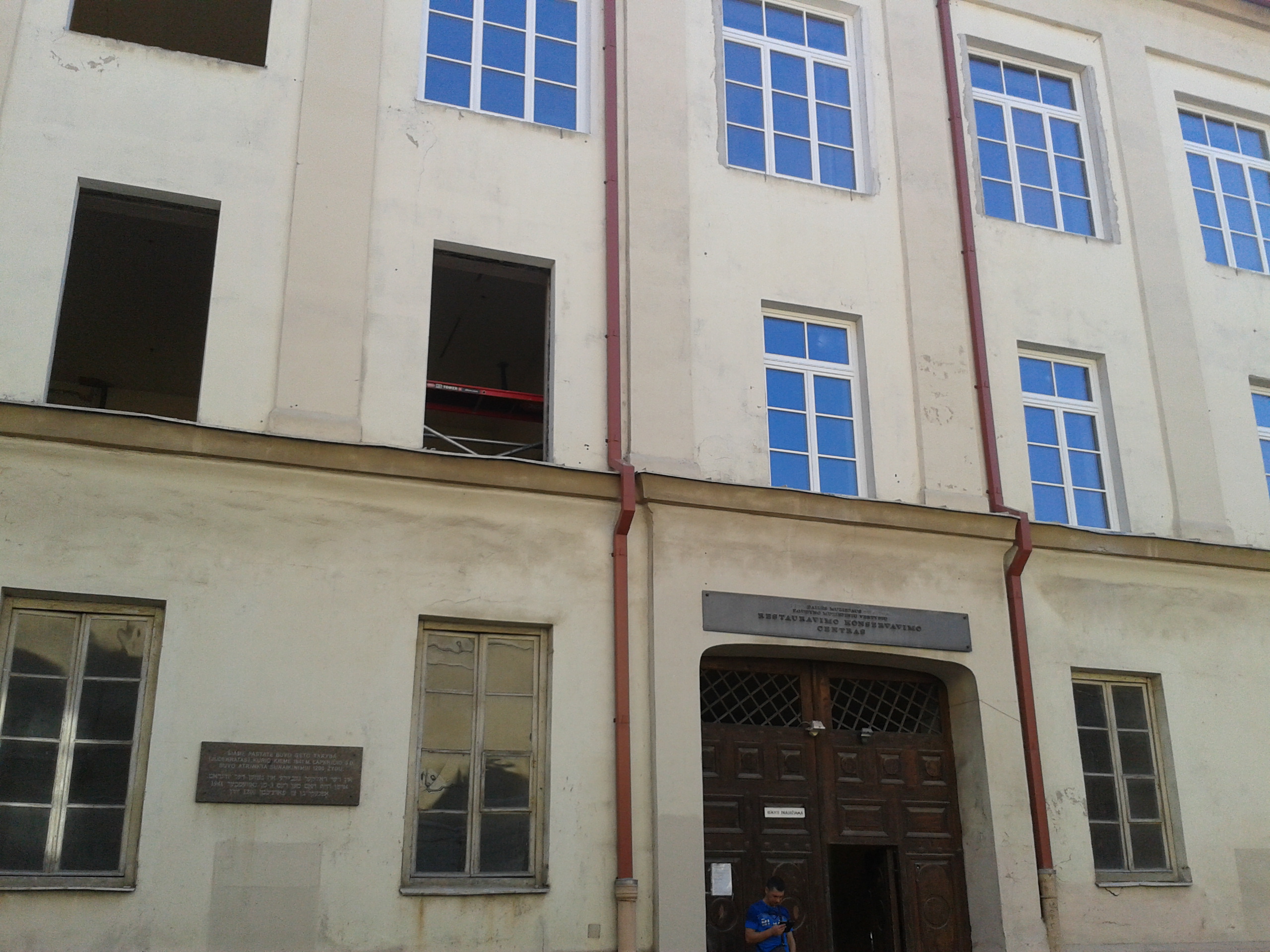 The building of the Judenrat which functioned from September 1941 to September 1943 within the Large Jewish Ghetto that was formed around Rūdninkų Square
The building of the Judenrat which functioned from September 1941 to September 1943 within the Large Jewish Ghetto that was formed around Rūdninkų Square
 Hebrew inscription above the windows on a former Jewish shop
Hebrew inscription above the windows on a former Jewish shop
All photos are copyrighted by Vladislav B. Sotirovic
© Vladislav B. Sotirovic 2019
RELATED POSTS
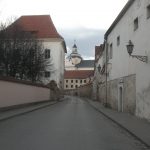
At the Church of the Holy Spirit, a Dominican monastery was established on St. Ignatius Street in 1501. In the 19th century, the buildings of the monastery were converted into a prison The entrance from St. Ignatius Street to the former old Jesuit Novitiate: arranged around three courtyards. It is the same age as the nearby Church of St. IgnatiusThe Church of St. Ignatius was erected from 1622 to 1647 being devastated by fires in 1748-1750. It suffered during the war against Russia from 1655 to 1661. The porch was added in the 19th century.All photos are copyrighted by Vladislav B. Sotirovic© Vladislav B. Sotirovic 2020
Continue Reading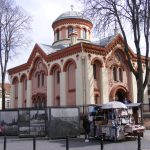
The Russian Orthodox Church of St. Parasceve (or Piatnickaya Church) is located in the centre of Vilnius' Old Town where a Russian Orthodox Church stood since the times of the Lithuanian Grand Duke Algirdas in the mid-14th centurySt. Parasceve Russian Orthodox Church is the oldest surviving Russian Orthodox Church in Lithuania located in the former Russian quarter of the Old TownThe church was reconstructed in the mid-19th century by the famous Russian architect N. ChaginAll photos are copyrighted by Vladislav B. Sotirovic© Vladislav B. Sotirovic 2021
Continue Reading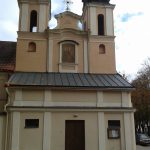
According to legend, the monastery and wooden church were built circa 1332 in the burial spot of the Franciscan monks that had been martyred by Lithuanian pagansThe building complex is formed in the mid-18th century. Today, the church possess six Late Baroque-style altars, with the main altar having a picture of the Holy Virgin Mary that is considered to be miraculous. A copy of the picture is painted on the façade in 1742 The monument to famous Lithuanian neo-Classicist architect Laurinas Gucevičius, the founder of Vilnius neo-Classicism, is erected in 1994 in the square in front of the church. All photos are copyrighted by Vladislav B. Sotirovic© Vladislav B. Sotirovic 2020
Continue Reading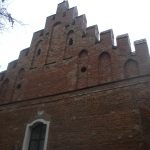
The church was named after St. Nicholas, who was the Bishop of Myra and the patron of travelers and merchants. The character of Santa Claus is thought to be based on this saintThe Church of St. Nicholas in Vilnius is the oldest surviving Late Gothic church in Lithuania. The small church was used by the Franciscan monks, who lived nearbyThe interior of the church is decorated with ornate rib and groin vaults. A 16th-century picture of St. Nicholas with a silver frame is located on the left altarAll photos are copyrighted by Vladislav B. Sotirovic© Vladislav B. Sotirovic 2018
Continue Reading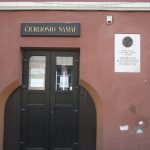
This building in Savičiaus Street in Vilnius Old Town acquired its present appearance in the 18th century with the 19th-century façade. Until the mid-19th century, the building was home to Vilnius governors and burgomasters In 1995, on the artist's 120th anniversary, a memorial culture center and the flat museum was opened in this house. The center and museum, today, hosts lectures on music, art, and philosophy, as well as chamber concertsM. K. Čiurlionis created 350 musical pieces and around 500 artworks. When he lived in this house, he created his most remarkable paintingsAll photos are copyrighted by Vladislav B. Sotirovic© Vladislav B. Sotirovic 2019
Continue Reading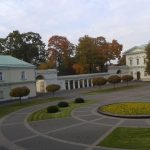
The palace has always been representional: rulers, kings, emperors and kings-to-be like Napoleon, Stanislaus August Poniatowski, Alexander I, Louis XVIII and others used to stay there on their visits to VilniusThe Soviets turned the palace into an officer's club later to be converted into Artist HouseIn 1939, when Vilnius had been part of Lithuania, plans to settle the Presidency in the palace were advanced. However, it was not until 1997 that these plans were carried outAll photos are copyrighted by Vladislav B. Sotirovic© Vladislav B. Sotirovic 2020
Continue Reading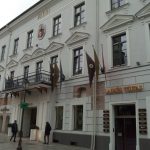
Polish King Jan Sobieski, Russian Emperor Alexander I and French Emperor Napoleon I visited the mansion on various occasions. The building was reconstructed in 1839-1841. The present façade is ClassicalA Florentine artist Michelangelo Palloni, was invited from Italy in 1674 to work at Pažaislis monastery and church near Kaunas, and Mykolas Kazimieras Pacas then commissioned him to paint frescoes for of this estate.Unfortunately, none of the original interior, which also included rich stucco work, remainsAll photos are copyrighted by Vladislav B. Sotirovic© Vladislav B. Sotirovic 2022
Continue Reading
Bronze door of the Central Library of Vilnius University. It portrays the university's history (est. 1579) along with that of Konigsberg's University (est. 1544)The Observatory Tower, on the spire of which the Jesuit university founders placed an IHS monogram of JesusThe building's façade is decorated in Rococo-style window framing with sun and Zodiac signes, with mathematical and astronomical instruments in between the windows All photos are copyrighted by Vladislav B. Sotirovic© Vladislav B. Sotirovic 2018
Continue Reading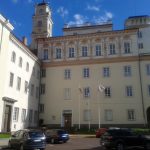
The north wing of the Library Courtyard with the building of the Faculty of History of the Vilnius UniversityThe entrance to the Central Library of the Vilnius University is decorated by the memorial door in 2001 for the 450 year anniversary of the first book printed in the Lithuanian language (1547)The main building with the main entrance to the Vilnius University with the Rector Office seen from the Library CourtyardAll photos are copyrighted by Vladislav B. Sotirovic© Vladislav B. Sotirovic 2020
Continue Reading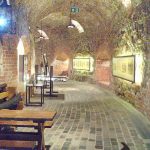
A semi-circular corridor of the Bastion of Vilnius, where cannons were lined up at embrasures, was called a casemate. A special platform with a parapet for heavy artillery was built on the terrace of the bastionA 48-m long, 2,8-m wide and 3,5 m high impressive tunnel leads from the tower to the underground casemate. Cannons brought to the tower would be rolled down this tunnelThe main part of the Bastion of Vilnius is the casemate. It is an underground horseshoe-shaped room for cannons. The casemate forms a semicircle around a 3-4 metre-high hill heightened with sand. From the outside the façade is 8 m high, and sloping, and is built from bricksAll photos are copyrighted by Vladislav B. Sotirovic© Vladislav B. Sotirovic 2020
Continue Reading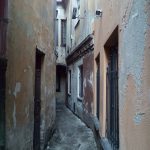
The entrance to the Knight Street in Vilnius Old TownA courtyard after the end of the Knight StreetThe end of the Knight Street (followed by the courtyard)All photos are copyrighted by Vladislav B. Sotirovic© Vladislav B. Sotirovic 2021
Continue Reading
Christmas Tree decoration at the Cathedral Basilica Square in Vilnius. The belfry is seen in the backgroundChristmas decoration in front of the principal building of the castle complex in Vilnius Old Town - Cathedral BasilicaCathedral Basilica of Vilnius is erected on the place of the pagan altar with a ceasred fire to the pagan god Perkūnas (god of Thunder)All photos are copyrighted by Vladislav B. Sotirovic© Vladislav B. Sotirovic 2019
Continue Reading
The Town Hall hosted a court, archive, weapons depository, as well as a prison for artisans that had broken the law. Burgomasters also held meetings in the Town Hall, as did the Council of Merchants Since 1991, Vilnius Old Town Hall once again is functioning as a place for holding important events like art exhibitions, concerts, conferences, meetings, etcIn the Middle Ages, the Town Hall Square was a place where physical punishment was carried out. There were gallows and a scaffold nearby, where executions were carried outAll photos are copyrighted by Vladislav B. Sotirovic© Vladislav B. Sotirovic 2019
Continue Reading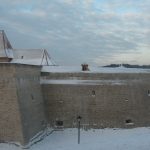
The Bastion is comprised of a tower, cannon room and 48 m. the long corridor connecting it with the towerThe walls and moats of the Bastion were excavated in 1965-1970, and the canon room was renovated in 1985-1986 The entire Bastion is converted into a museum, and since 1987 it houses an exhibition of defensive fortifications and weaponryAll photos are copyrighted by Vladislav B. Sotirovic© Vladislav B. Sotirovic 2019
Continue Reading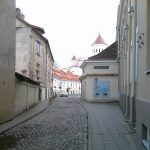
The Grand Duke of Lithuania Sigismund (1432-1440), who ruled briefly after the death of his brother Vytautas the Great (died in 1430), granted equal rights to the Russian Orthodox believers living in the capital-city of Vilnius - before long they came to constitute one half of the members of the city board and guild elders In the Middle Ages Vilnius (today Old Town) was increasingly multy-national as it was the case with the Grand Duchy of Lithuania as well. The city was, in fact, divided into four quarters according to the ethnic and religious belonging of its citizens: the German Quarter, the Russian Quarter, the Jewish Quarter, and the Tartar Quarter. Each of these city quarters had the main street named according to the ethnic belonging of their inhabitantsThe Russian Street in Old Town of Vilnius ends with the Russian Orthodox Cathedral (Sobor) of the Dormition of the Holy Mother ...
Continue Reading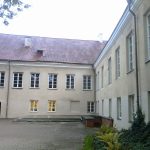
Earlier in this courtyard was an artillery school. The Rector of the Vilnius University S. Malewski as well as lived in the building of this courtyardA poet Adam Mickiewicz spent much time with his son in their house in 1818-1819. As the first-year student, he lived in one of those buildings. Later, it became a gathering place of the PhilomatsThe courtyard is surrounded by two-storey buildings. A Gothic façade of one of them is facing Pilies StreetAll photos are copyrighted by Vladislav B. Sotirovic© Vladislav B. Sotirovic 2023
Continue Reading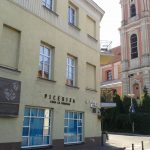
Monument in Remembrance of Vilnius Ghetto Martyrs and Fighters in 1941-1943. The Large Vilnius Jewish Ghetto was liquidated on September 23, 1943, and the Jews who couold work were moved to concentration and labor campsFormer Vilnius Ghetto Theatre. Jewish institutions, which included the theatre, did not stop operating in the ghetto during WWII. A theatre was in operation in the Large Ghetto in 1942-1943 The Ghetto Library's building, now under the reconstruction. At the time of ghetto, the name of the street was Strashun Street in which the library was locatedAll photos are copyrighted by Vladislav B. Sotirovic© Vladislav B. Sotirovic 2019
Continue Reading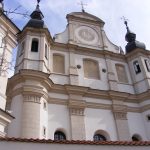
The church was financed by Grand Chancellor of the Grand Duchy of Lithuania, Grand Hetman, and Vilnius Voivode - Lew Sapieha, who had converted to Roman Catholicism from Calvinism. He was one of the most influential nobles in the Grand Duchy of LithuaniaLew Sapieha gave the church and surrounding buildings for the Bernardine nuns to have a convent and built a Sapieha family mausoleum in the churchThe convent was also a place where the daughters of rich aristocrats were taught. Today, the Church Heritage Museum operates in the churchAll photos are copyrighted by Vladislav B. Sotirovic© Vladislav B. Sotirovic 2019
Continue Reading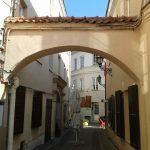
A building of Jewish Center of Culture and Information in the area of the Large Jewish Ghetto in 1941-1943. In this house a famous Vilnius resident Dr. Tzemach Shabad livedTzemach Shabad (1864-1935) was not only a good doctor, but a societal and community figure, and humanist as well. A monument (in 2007 erected) to him on the territory of WWII Large Jewish GhettoA plaque of a plan of the Jewish Ghetto in 1941-1943. There were Small and Large Jewish Ghettos existing from September 6th, 1941 to September 23rd, 1943. Today, September 23rd is the National Memorial Day for the Holocaust/Genocide of the Lithuanian Jews All photos are copyrighted by Vladislav B. Sotirovic© Vladislav B. Sotirovic 2019
Continue Reading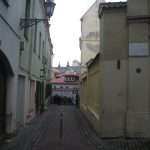
An idea to designate this small street a memorial site to writers began to be implemented in 2008Literatų Street No. 5: The Piasecki house built in the late 18th century. In 1823, having arrived from Kaunas, Adam Mickiewicz resided here at the invitation of the parents of his friend Kazimierz Piasecki. On the pediment of the entry arch a memorial plaque with a Polish inscription is set up; plaques with Lithuanian and Russian inscriptions are set below on both sides of the arch In the 19th century there were many bookshops on this street, hence its nameAll photos are copyrighted by Vladislav B. Sotirovic© Vladislav B. Sotirovic 2019
Continue ReadingSt. Ignatius Street
The Church of St. Parasceve
Church of the Holy Cross & former Hospitaller Monastery
Church of St. Nicholas
M. K. Čiurlionis Memorial Flat Museum
The Inner Courtyard of the Presidential Palace in Vilnius
The Pac Mansion
The Central Buildings of the Old Campus of the Vilnius University
The Library Courtyard of the Vilnius University
The Bastion of the Vilnius Defensive Wall (III)
The Knight Street in Vilnius
Vilnius Christmas Tree
Vilnius Old Town Hall
The Bastion of the Vilnius Defensive Wall (I)
The Russian Street in Vilnius
Adam Mickiewicz Courtyard of the Vilnius University
The Large Vilnius Jewish Ghetto
Church of St. Michael the Archangel
Jewish Quarter (I)
Literatų Street



